Voltcraft OFT-01 Bruksanvisning
Läs gratis den bruksanvisning för Voltcraft OFT-01 (4 sidor) i kategorin mätning. Guiden har ansetts hjälpsam av 32 personer och har ett genomsnittsbetyg på 5.0 stjärnor baserat på 16.5 recensioner. Har du en fråga om Voltcraft OFT-01 eller vill du ställa frågor till andra användare av produkten? Ställ en fråga
Sida 1/4
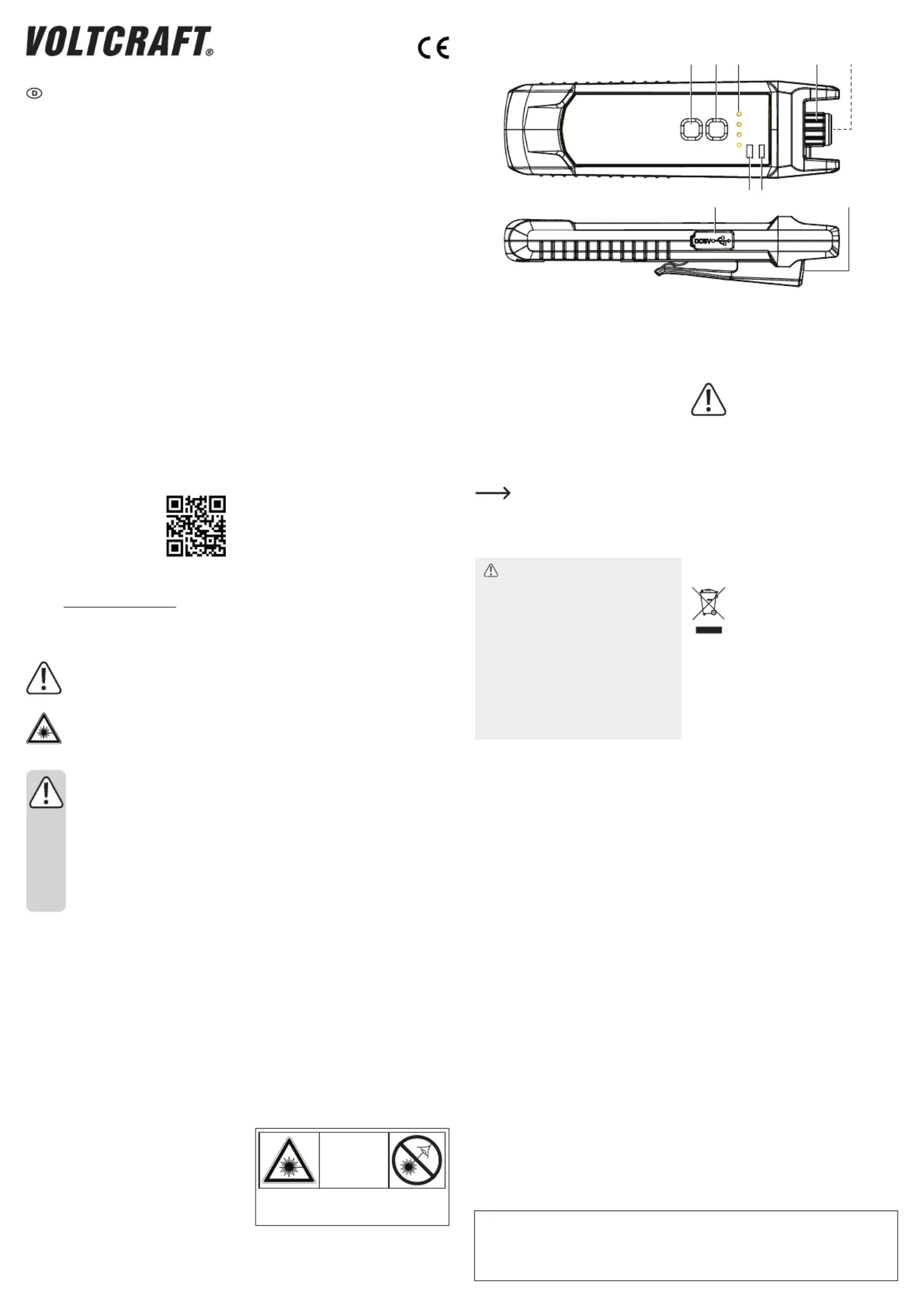
Bedienelemente und Komponenten
1 2 3 4 5
6 7 8 9
1 Laser-Taste
2 Taste für Taschenlampe
3 LED-Akkustandsanzeigen
4 Abdeckung der Laserquelle
5 Taschenlampe (hinten)
6 Micro-USB-Ladeanschluss
DC5V
7 -Anzeige APO
(Abschaltautomatik)
8 -StatusanzeigeLASER
9 Befestigungsklammer
Auaden des Akkus
1. Entfernen Sie zunächst die Abdeckung des
Ladeanschlusses .(6)
2. Schließen Sie dann ein Ende des USB-Kabels
an den Micro-USB-Ladeanschluss ( ) Ihres DC5V
Geräts und das andere Ende an eine geeignete
USB-A-Stromversorgung an.
3. Bringen Sie nach Abschluss des Ladevorgangs
die Abdeckung wieder an.
An den LEDs der Akkustandsanzeige (3)
können Sie den aktuellen Ladezustand des
Akkus erkennen. Ist der Ladezustand nied-
rig, laden Sie den Akku zeitnah wieder auf.
Inbetriebnahme und Verwendung
Wichtig
• Um die Komponente gegen das unbeab-
sichtigte Entladen abzuschirmen und die
Linse vor Kratzern, Staub und Feuchtigkeit
zu schützen, muss die Abdeckung der
Laserquelle nach jedem Gebrauch (4)
wieder angebracht werden.
• Wenden Sie stets auch die im Abschnitt
„Sicherheitshinweise“ → e) „Laser“
aufgeführten Vorsichtsmaßnahmen an. Diese
gelten auch für Projektionen von Laserlicht,
die bei der Prüfung von Lichtwellenleitern
auftreten.
1. Entfernen Sie zunächst einmal die Abdeckung
der Laserlichtquelle und schließen Sie den Ste-
cker (2,5 mm) eines Glasfaserkabels an den
optischen Messeingang an.
2. Drücken Sie dann die Laser-Taste . Die (1)
LASERStatusanzeige leuchtet daraufhin rot und
der Laser wird abgefeuert.
- Bendet sich das Glasfaserkabel in einem
guten Zustand, bleibt die Statusanzeige an-
schließend rot erleuchtet.
- Bendet sich das Glasfaserkabel in einem
schlechten Zustand, erlischt die Statusanzeige.
3. Drücken Sie die Laser-Taste erneut, damit die
LASER-Statusanzeige rot zu blinken beginnt
und der Laser in Intervallen von jeweils 1 Hz
abgefeuert wird.
4. Ist der Prüfvorgang abgeschlossen, schalten Sie
den Laser aus, indem Sie die Laser-Taste ein
weiteres Mal drücken.
5. Bringen Sie anschließend die Abdeckung der
Laserlichtquelle wieder an.
a) Abschaltautomatik
Während des Einschaltvorgangs leuchtet die
APO-Anzeige (Abschaltautomatik) grün.
• Die Abschaltautomatik wird nach 15 Minuten
Inaktivität ausgelöst.
• Möchten Sie die Abschaltautomatik deaktivieren,
halten Sie während des Einschaltvorgangs eine
beliebige Taste zwei Sekunden lang gedrückt.
b) Taschenlampe
Drücken Sie wiederholt die Taste für die Taschen-
lampe (2), um zwischen den folgenden Betriebsmodi
umzuschalten: AN → blinkt → AUS.
Pege und Reinigung
Verwenden Sie keine aggressiven
Reinigungsmittel, Alkohol oder andere
chemische Lösungsmittel, da diese zu
Schäden am Gehäuse und zu Fehlfunk-
tionen führen können.
• Trennen Sie vor der Durchführung etwaiger
Reinigungsarbeiten stets sämtliche Kabel vom
Gerät und bringen Sie die Abdeckung der Laser-
lichtquelle wieder an.
• Sollte die Linse der Laserquelle verschmutzt
sein, wischen Sie sie mit einem speziellen Reini-
gungstupfer für Laserlinsen oder einem weichen,
trockenen, faserfreien Tuch ab.
Entsorgung
Elektronische Geräte sind Wertstoffe
und gehören nicht in den Hausmüll.
Entsorgen Sie das Produkt am Ende
seiner Lebensdauer gemäß den geltenden
gesetzlichen Bestimmungen.
Sie erfüllen damit die gesetzlichen
Verpichtungen und leisten Ihren
Beitrag zum Umweltschutz.
Technische Daten
Eingangsspannung/-strom ... 5 V/DC, 1 A
Akku 3,7 V, 1050 mAh, LiPo ..................................
Stromverbrauch max. 80 mA ................
Laser <50 mA
Taschenlampe <35 mA
Akkulaufzeit ca. 10 Std. ......................
Unterspannungsanzeige <3 V ...
Laserklasse 2 ......................
Laserleistung <1 mW ....................
Wellenlänge des
Laserstrahls 650 ± 20 nm ......................
Länge des
Lichtwellenleiters 1000 – 3000 m ..............
Steckertyp FC 2,5 mm .........................
Betriebshöhe ....................≤2000 m
Betriebsbedingungen 0 bis +40 °C, 20 – 75 % ........
rF (nicht kondensierend)
Lagerbedingungen ............ -10 bis +50 °C, 10 – 90 %
rF (nicht kondensierend)
Abmessungen 38 x 130 x 25 mm ...................
(B x H x T)
Gewicht 62 g .............................
Bedienungsanleitung
Glasfaser Prüfgerät
Best.-Nr. 2274367
Bestimmungsgemäße Verwendung
Bei diesem Produkt handelt es sich um Gerät, das
unter Verwendung einer Laserlichtquelle Lichtwel-
lenleiter auf Fehler untersucht. Besonders geeignet
ist das Produkt u. a. beim Ausbau und der Wartung
von Glasfasernetzen, bei der Herstellung optischer
Geräte und in der Forschung.
Das Produkt bzw. dessen Gehäusekomponente
entspricht der Schutzart IP54, vorausgesetzt,
die Abdeckungen des Ladeanschlusses und der
Laserlichtquelle sind angebracht. Das bedeutet,
es ist zeitweise vor dem Eindringen von Staub und
Spritzwasser aus jeder Richtung geschützt.
Aus Sicherheits- und Zulassungsgründen dürfen Sie
das Produkt nicht umbauen und/oder verändern.
Sollten Sie das Produkt für andere als die zuvor
beschriebenen Zwecke verwenden, kann das Produkt
beschädigt werden. Darüber hinaus kann eine
unsachgemäße Verwendung zu weiteren Gefahren
führen. Lesen Sie sich die Bedienungsanleitung
sorgfältig durch und bewahren Sie sie sicher auf.
Reichen Sie das Produkt nur zusammen mit der
Bedienungsanleitung an Dritte weiter.
Dieses Produkt erfüllt die gesetzlichen nationalen und
europäischen Anforderungen. Alle enthaltenen Firmen-
namen und Produktbezeichnungen sind Warenzeichen
der jeweiligen Inhaber. Alle Rechte vorbehalten.
Lieferumfang
• Prüfvorrichtung
• USB-Kabel
• Bedienungsanleitung
Aktuelle Bedienungsanleitungen
Laden Sie aktuelle Bedienungsanleitungen über
den Link www.conrad.com/downloads herunter oder
scannen Sie den abgebildeten QR-Code. Befolgen
Sie die Anweisungen auf der Webseite.
Symbol-Erklärung
Das Symbol mit dem Ausrufezeichen im
Dreieck weist auf wichtige Informationen in
dieser Bedienungsanleitung hin. Lesen Sie
diese Informationen immer aufmerksam.
Das Symbol weist auf den integrierten
Laser hin.
Sicherheitshinweise
Lesen Sie sich die Bedienungsanlei-
tung sorgfältig durch und beachten
Sie insbesondere die Sicherheitshin-
weise. Sollten Sie die in dieser Bedie-
nungsanleitung aufgeführten Sicher-
heitshinweise und Informationen für
einen ordnungsgemäßen Gebrauch
nicht beachten, übernehmen wir kei-
ne Haftung für daraus resultierende
Personen- oder Sachschäden. Darü-
ber hinaus erlischt in solchen Fällen
die Gewährleistung/Garantie.
a) Allgemeines
• Das Produkt ist kein Spielzeug. Halten Sie es von
Kindern und Haustieren fern.
• -Lassen Sie das Verpackungsmaterial nicht acht
los liegen. Dieses könnte andernfalls für Kinder
zu einem gefährlichen Spielzeug werden.
• Schützen Sie das Produkt vor extremen Tem-
peraturen, direkter Sonneneinstrahlung, starken
Erschütterungen, hoher Feuchtigkeit, Nässe,
brennbaren Gasen, Dämpfen und Lösungsmitteln.
• Setzen Sie das Produkt keiner mechanischen
Beanspruchung aus.
• Sollte kein sicherer Betrieb mehr möglich sein, neh-
men Sie das Produkt außer Betrieb und schützen Sie
es vor unbeabsichtigter Verwendung. Der sichere Be-
trieb ist nicht mehr gewährleistet, wenn das Produkt
- sichtbare Schäden aufweist,
- nicht mehr ordnungsgemäß funktioniert,
- über einen längeren Zeitraum unter ungünstigen
Umgebungsbedingungen gelagert wurde oder
- erheblichen Transportbelastungen ausgesetzt
wurde.
• Gehen Sie stets vorsichtig mit dem Produkt um.
Stöße, Schläge oder sogar das Herunterfallen aus
geringer Höhe können das Produkt beschädigen.
• Wenden Sie sich an einen Fachmann, sollten Sie
Zweifel in Bezug auf die Arbeitsweise, die Sicher-
heit oder den Anschluss des Geräts haben.
• Sollten Sie noch Fragen haben, die in dieser
Bedienungsanleitung nicht beantwortet wurden,
wenden Sie sich an unseren technischen Kun-
dendienst oder anderes Fachpersonal.
b) LiPo-Akkus
• Der Akku ist fest im Produkt verbaut und kann
nicht ausgetauscht werden.
• Beschädigen Sie den Akku niemals. Bei Beschädi-
gung des Akkugehäuses besteht Explosions- und
Brandgefahr! Die Hülle des LiPo-Akkus besteht
nicht wie bei herkömmlichen Batterien/Akkus (z. B.
des Typs AA oder AAA) aus einem dünnen Blech,
sondern nur aus einer empndlichen Kunststofffolie.
• Die Kontakte/Anschlüsse des Akkus dürfen nicht
kurzgeschlossen werden. Werfen Sie den Akku
bzw. das Produkt nicht ins Feuer. Es besteht Ex-
plosions- und Brandgefahr!
• Laden Sie den Akku auch bei Nichtverwendung
des Produkts regelmäßig wieder auf. Die verwen-
dete Akkutechnik erlaubt das Auaden des Akkus
ohne vorherige Entladung.
• Lassen Sie den Akku des Produkts während des
Ladevorgangs niemals unbeaufsichtigt.
• Platzieren Sie das Produkt während des Ladevor-
gangs auf einer hitzebeständigen Oberäche. Eine
gewisse Erwärmung beim Ladevorgang ist normal.
c) USB-Stromquelle
• Vergewissern Sie sich, dass das USB-Netzteil ei-
nen ausreichend starken Ladestrom bereitstellen
kann, da andernfalls Schäden an der Stromquel-
le auftreten können. Verwenden Sie also keinen
USB-Anschluss eines Computers, einer Tastatur
oder eines USB-Hubs ohne Netzteil, da der über
diese Anschlüsse gelieferte Strom nicht ausreicht.
d) LED-Licht
• Achtung, LED-Licht:
- Blicken Sie nicht direkt in das LED-Licht!
- Blicken Sie weder direkt noch mit optischen
Geräten in den Lichtstrahl!
e) Laser
• Beim Betrieb der Lasereinrichtung ist unbedingt
darauf zu achten, dass der Laserstrahl so geführt
wird, dass sich keine Person im Projektionsbereich
bendet und dass ungewollt reektierte Strahlen
(z. B. durch reektierende Gegenstände) nicht in den
Aufenthaltsbereich von Personen gelangen können.
• Laserstrahlung kann gefährlich sein, wenn der
Laserstrahl oder eine Reexion in das ungeschütz-
te Auge gelangt. Machen Sie sich daher vor Ver-
wendung des Produkts unbedingt mit den gesetzli-
chen Vorschriften und Anweisungen bezüglich des
Betriebs einer solchen Lasereinrichtung vertraut.
• -Blicken Sie niemals direkt in den Laserstrahl hin
ein und richten Sie ihn unter keinen Umständen
auf Personen oder Tiere. Laserstrahlung kann
schwere Augenverletzungen herbeiführen.
• Wenn Laserstrahlung ins Auge trifft, sind die Au-
gen bewusst zu schließen und der Kopf ist sofort
aus dem Strahl zu bewegen.
• Sollten Sie sich durch die Laserstrahlung eine
Reizung der Augen hinzugezogen haben, ist von
der Ausführung gefährlicher Arbeiten, wie z. B.
Arbeiten an Maschinen, Arbeiten in großer Höhe
oder Arbeiten in der Nähe von Hochspannungen,
dringend abzusehen. Führen Sie bis zum Abklin-
gen der Irritation auch keine Fahrzeuge mehr.
• Richten Sie den Laserstrahl niemals auf Spiegel oder
andere reektierende Flächen. Der unkontrolliert
abgelenkte Strahl könnte Personen oder Tiere treffen.
• Das Gerät darf unter keinen Umständen geöffnet wer-
den. Einstell- oder Wartungsarbeiten dürfen nur von
entsprechend ausgebildetem Fachpersonal, das mit
den möglichen Gefahren vertraut ist, vorgenommen
werden. Unsachgemäß ausgeführte Einstellarbeiten
können zur Folge haben, dass Sie sich selbst oder
Dritte einer gefährlichen Laserstrahlung aussetzen.
• Das Produkt ist mit einem Laser der Laserklasse
2 ausgerüstet. Im Lieferumfang benden sich La-
serhinweisschilder in verschiedenen Sprachen.
Sollte das Hinweisschild auf dem Laser nicht in
Ihrer Landessprache verfasst sein, befestigen Sie
bitte das entsprechende Schild auf dem Laser.
Max. Leistung: <1 mW
Wellenlänge: 630 – 670 nm
EN 60825-1: 2014
LASER 2
• Vorsicht: Die Verwendung von nicht in dieser Bedie-
nungsanleitung beschriebenen Geräten oder Verfah-
rensweisen kann dazu führen, dass Sie sich und Drit-
te einer gefährlichen Strahlenbelastung aussetzen.
Dies ist eine Publikation der Conrad Electronic SE, Klaus-Conrad- 1, D-92240 Hirschau (www.conrad.com). Alle Rechte
einschließlich Übersetzung vorbehalten. Reproduktionen jeder Art, z. B. Fotokopie, Mikroverlmung oder die Erfassung in
elektronischen Datenverarbeitungsanlagen bedürfen der schriftlichen Genehmigung des Herausgebers. Nachdruck, auch
auszugsweise, verboten. Die Publikation entspricht dem technischen Stand bei Drucklegung.
Copyright 2020 by Conrad Electronic SE. *2274367_v1_0920_02_dh_m_de
Produktspecifikationer
| Varumärke: | Voltcraft |
| Kategori: | mätning |
| Modell: | OFT-01 |
Behöver du hjälp?
Om du behöver hjälp med Voltcraft OFT-01 ställ en fråga nedan och andra användare kommer att svara dig
mätning Voltcraft Manualer
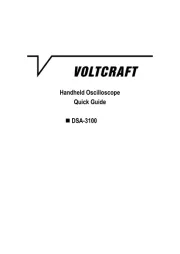
12 September 2025
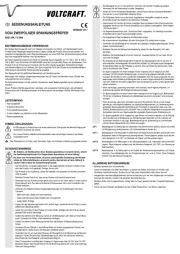
22 Juli 2025
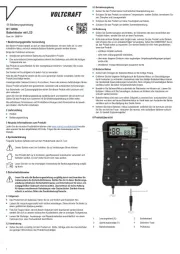
22 Juli 2025
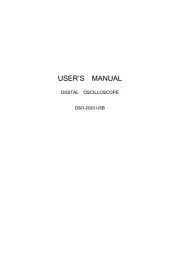
22 Juli 2025
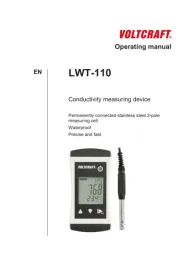
22 Juli 2025
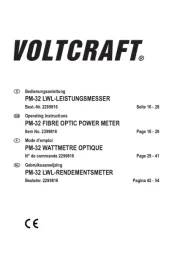
21 Juli 2025
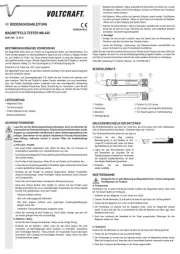
21 Juli 2025
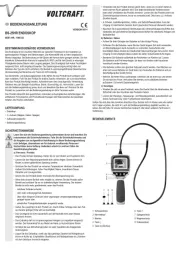
21 Juli 2025
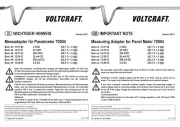
21 Juli 2025

21 Juli 2025
mätning Manualer
- PCE Instruments
- Kübler
- Nebula
- Entes
- Sungrow
- Mahr
- MGL Avionics
- True Blue Power
- Gossen Metrawatt
- National Geographic
- PeakTech
- Mueller
- Bresser
- Mitsubishi
- RIDGID
Nyaste mätning Manualer
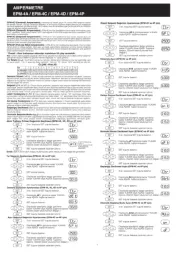
21 Oktober 2025
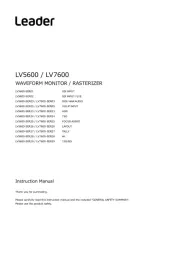
18 Oktober 2025
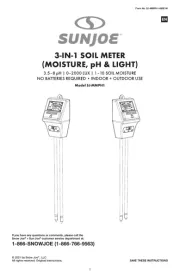
13 Oktober 2025
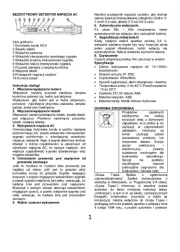
11 Oktober 2025
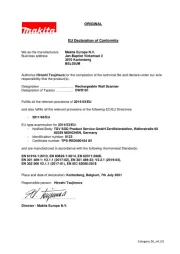
8 Oktober 2025
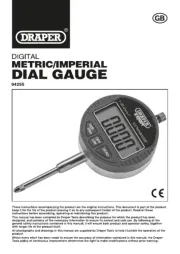
8 Oktober 2025
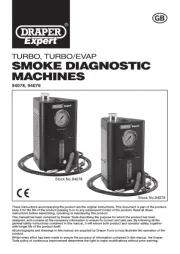
8 Oktober 2025
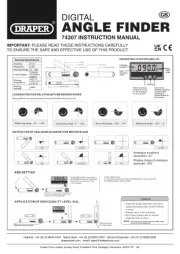
7 Oktober 2025
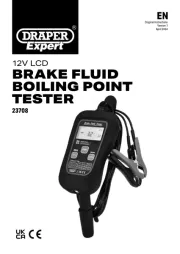
7 Oktober 2025
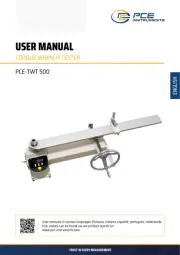
7 Oktober 2025